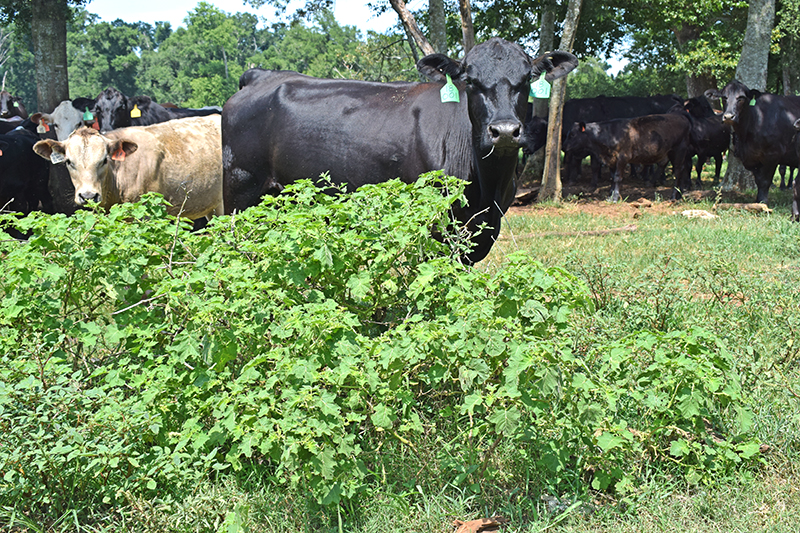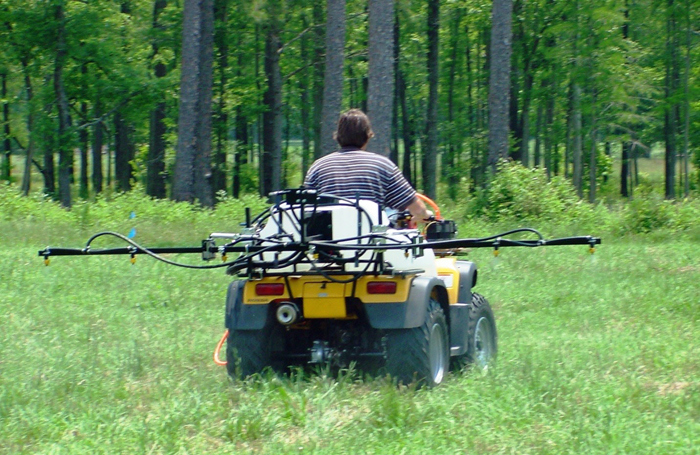Weed ID, product selection & rate, equipment calibration & product delivery, and application timing are all interconnected – failure to address any of these practices can lead to less-than-optimal results from a herbicide application.
–
Weed ID
Know thine enemy. The first step in any effective weed management program is the accurate identification of the weeds to be managed. All subsequent considerations are based on this knowledge. While this may sound quite elementary, I have seen firsthand many instances where herbicides were applied, and the decision maker had either incorrectly identified the target weeds or had made no attempt to identify them. Granted, you can get lucky is some situations – we have some very good herbicides at our disposal. However, more often than not, efforts lacking this most basic understanding are less effective and/or efficient than the otherwise could have been.
Furthering this point, it is crucial to accurately identify all weeds in the area. Only when you understand the significance or lack thereof for all the weeds in the area can you make the most informed decisions possible. Labor and equipment costs account for a substantial portion of the total expense associated with a herbicide application. Slight adjustments in product selection, rate, and/or timing of the application may well allow for the control of weeds that would have eventually become the main concern. There is hardly ever just one significant weed in the mix, and the most visible weed species may not be the best one to build control efforts around. Only when you have correctly identified all the key players will you have the opportunity to put the most efficient plan into action, allowing you to get the most out of each trip over the field, save future application costs and prevent lost productivity.

The first step for developing an effective pasture weed control plan is to properly identify the primary weeds of concern. Clearly tropical soda apple and spiny pigweed control should be considered for this pasture. Credit: Doug Mayo, UF/IFAS
–
Product Selection & Rate
It is readily evident to most that for a herbicide application to be successful the correct product must be used. Find the most cost-effective product or combination of products to control your slate of weeds – simple, right? Sometimes it is, sometimes there is only one good option for the situation, but very often there are MANY options that could get the job done, shifting the emphasis to finding the most cost-effective option. Balancing efficacy and price can get quite complicated. Every situation is different, utilize credible human and published resources when developing a management plan. The following are some key concepts to think while working through the product selection process.
- Be sure any product you are contemplating is labeled for use in a pasture setting – don’t just google “what kills weed xyz” and order the first thing that pops up.
– - Not every product labeled for pasture use is safe on all types of grass – be sure your desired forage is tolerant of any herbicide you consider.
– - Product recommendations must include a rate. The right product at the wrong rate will waste money or won’t work as expected.
– - There is nothing wrong with using generic herbicides, just make sure read that specific label, as concentrations of active ingredients can vary.
– - Evaluate product cost in terms of $/ac. Knowing the cost of a jug of herbicide is useless without knowing how many acres you can treat with the jug. This means you must know the rate to be applied per acre.
– - The best product may be a combination of products.
– - Think long term. Understand how products use can impact future land use like planting cool-season annuals or rotating to a cropping system.
–
Equipment Calibration & Product Delivery
As it relates to spraying herbicides, equipment calibration generally refers to accurately quantifying and being able to consistently repeat the amount of spray solution applied to each acre. Assuming the spray equipment is in good working order and the applicator has sufficient skill or technological assistance to avoid excessive skips and/or overlaps, calibrating spray equipment is not all that difficult. Video and written guides for the process are readily available and UF/IFAS Extension Agents are available to assist. Simple or not, calibration is a step that cannot be neglected. In order to know how much product needs to go into the spray tank, exact spray output per acre must first be known. In other words, you must know how many acres you can cover per spray tank. Correct rate cannot be achieved without proper calibration.
As with calibration, assuming properly functioning and operated equipment, the physical aspect of product delivery should be fairly straight forward. However, the chemical aspect must also be considered. Understanding and addressing spray water characteristics and the correct use of adjuvants is crucial for effective product delivery. It is important to know the pH and hardness of all water sources you may use for mixing herbicides. Harsh spray water conditions can negatively impact the herbicide molecules prior to application, effectively altering the rate of herbicide being applied. In many cases if the water is in the “normal” range there is nothing to be done, but there are certainly cases where water conditioning agents need to be added to the spray mixture. In Northwest Florida our issues tend to bend with very high pH and hardness. These conditions impact specific herbicides differently. Take note, if the product label indicates sensitivity to a condition your water has or recommends a water conditioner (like AMS) address the situation and/or follow the recommendation.
Adjuvant use is much the same in that problems will be avoided, and products delivered effectively if label recommendations are followed. Products vary with respect to which adjuvants (NIS, MSO, crop oil, etc.) work the most effectively and at what rate the adjuvant should be used. Do not assume you know what is best for a product – read the label. Herbicide companies want their product to work as well as possible, so they will provide you with the best guidance for how to achieve that goal.

Sprayer calibration is a step that cannot be neglected. In order to know how much product needs to go into each tank, exact spray output per acre must first be known. In other words, you must know how many acres you can cover per spray tank. Credit: Doug Mayo, UF/IFAS
–
Application Timing
Proper timing of herbicide applications is crucial. The right product at the right rate, delivered properly, may still not yield the desired results if the application is not made at the correct time. There are many factors that must be considered in relation to the optimum timing of a herbicide application, unfortunately applicator convenience is very low on this list.
- “Happy” plants are much more effectively controlled with herbicide than are stressed plants. Don’t waste an application during times of drought. Allow weeds time to recover from defoliation or other disturbance prior to spraying. Adequate leaf area is crucial for many common pasture/hayfield products to be effective.
– - Be cognizant of preharvest intervals in hay fields, grazing restrictions in pastures, and plant back restrictions on any site where something besides permanent perennial pasture will be grown.
– - Consider the maturity of the forage. Some products are only safe to use on established pastures while others can be used during establishment.
– - Consider the maturity of the weeds. Younger / smaller weeds are easier to kill than large more mature weeds. There is generally not much point in spraying annual weeds after they have entered the reproductive (flowering/fruit) phase of their life.
– - Spraying earlier in the season, before pasture productivity is lost, is generally recommended but there are times when perennial weeds are more effectively controlled with fall applications.
– - In the always difficult scenario of managing weedy grasses, timing is often the most effective tool we have to help differentiate which grass species is spared and which is controlled by an application.
–
As shown by the previous comments, there are many factors to be considered while planning an effective and efficient herbicide program. My biggest piece of advice is to do just that – consider and plan. There are too many moving parts that require careful planning. Herbicides are highly effective tools when used correctly, but like all other tools they are not effective or cause problems when used incorrectly. Every situation is unique, plan accordingly and don’t be afraid to ask for help.
Start with the best Ask IFAS publication on this topic: Weed Management in Pastures and Rangeland. This publication provides efficacy ratings on a range of common pasture weeds and some limited recommendations for use of each active ingredient labeled for use on Florida pastures and hayfields. This can narrow your search for the active ingredient options that are effective, but you still need to read the product label of the specific product you purchase.
–
Mark Mauldin, County Ag Extension Agent
UF/IFAS Extension Washington County
Mdm83@ufl.edu
352-317-7799
- Peanut Maturity Update – 10/9/25 - October 10, 2025
- Fall Can be a Great Time for Vegetation Management - October 3, 2025
- Peanut Maturity Update – 9/25/25 Edition - September 26, 2025
